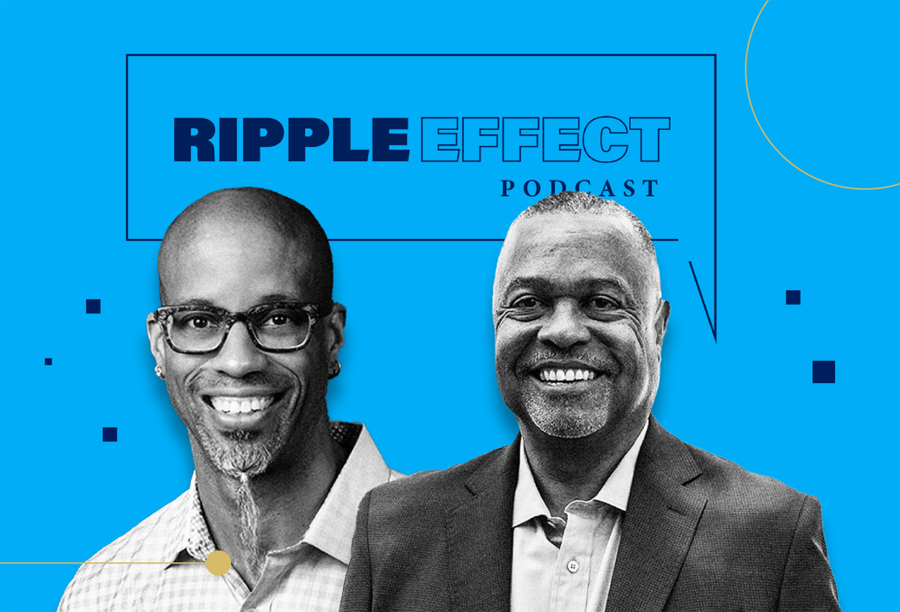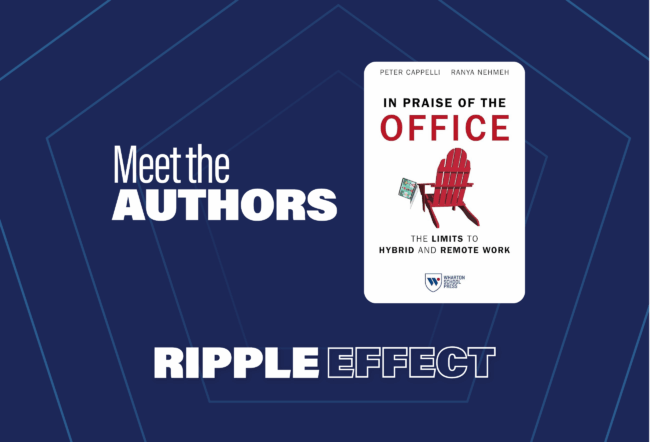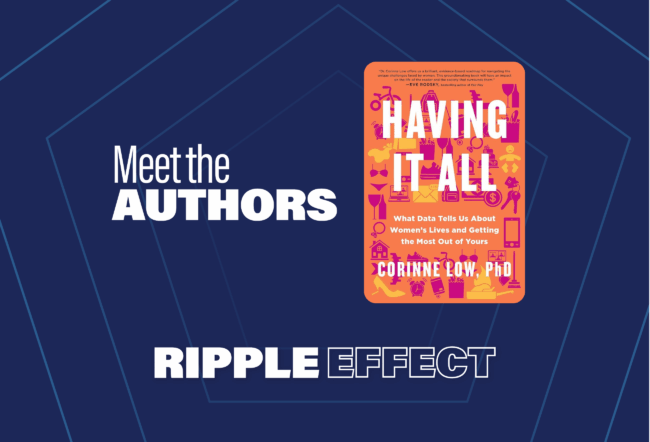Diversity, equity, and inclusion (or DEI) has become an important brand for companies, but too many are glossing over the hard work needed to create authentic change. In this episode, Wharton marketing professor Americus Reed explains what it takes.
This podcast is part of a special Juneteenth series on the complex issues of racial inequality, bias, and representation within organizations. Led by guest host Kenneth Shropshire, faculty director of Wharton’s Coalition for Equity and Opportunity, the series also includes conversations about psychological safety in the workplace, board diversity, and authenticity at work.
Transcript
Why Should Brands Be Managing Diversity, Equity, and Inclusion?
Kenneth Shropshire: Americus, you and I talk about these issues of diversity, equity, and inclusion (DEI) a lot, partly as being two of the senior African American leaders in the school. One of the things I want to highlight is that you are a branding expert; you are not a race branding expert. This is a conversation that talks about branding as applied to this topic. But before we get into that, what’s the importance of branding for a company overall?
Americus Reed: I love that question. I think it’s important because if you step back and think, what is branding and how does it fit into the overall context of the organization? It’s huge. We think about branding and we’re sometimes fooled because we think it’s a picture, it’s a tagline, it’s a logo. Certainly, brands have external markers that communicate to the world, “This is where we are and how you can find us.”
But if you think about it a little bit more generally, a brand is really a meaning system. It is a way to communicate to a group of people, a marketplace: “These are my values, and this is what I stand for, and this is my mission.” Branding has a much deeper impact. Hopefully, the smart organizations, services, companies, etc., understand that distinction and are working very hard to make sure that what they believe they stand for is what the marketplace actually perceives.
Shropshire: That gets us into the race-in-the-workplace context that we’re talking about in this series. There’s a new study from McKinsey that says that companies have committed up to $340 billion to these issues related to equity and opportunity post-George Floyd, and $141 billion of that has been committed just in the past year. In terms of branding, how are companies utilizing this moment and the announcement of these funds? What needs to go hand in hand with it?
Reed: I think what’s really important, and an aspect that is sometimes missed, is the idea that as we try to communicate a connection to a marketplace and an understanding of how we, as an organization, are changing to become better or to be better citizens — what needs to be done? I think the money piece is super important, but what’s equally important is the understanding of, once we create diversity, and once we create inclusion, once we create a kind of composition within the organization, then we’re actively trying to manage that in a way that allows that inclusion, that change in the organization to be successful. It’s a really serious mistake if you just create diversity, and you try to walk away and think it’s going to happen and facilitate all of the positive things on its own.
The organization, the individuals, the employees, the people have to understand how to reconnect and reintegrate with new perspectives. And sometimes that requires difficult conversations. It requires uncomfortable situations because you have a new context that employees are expected to thrive in. And you just can't pretend that that’s going to happen all on its own.
There also has to be some oversight and some purposeful consideration with respect to how to manage that diversity. I think companies are awake to that now, and they understand that it’s not just only being self-aware, but it’s also understanding that we have to work very hard to manage this new world that we want to try to see in the vision of our future.
Shropshire: Externally, you can get a branding bump by announcing the money, by announcing programs. But you’re saying that to be impactful, the work continues once you make that announcement in a way that maybe so companies haven’t contemplated.
Reed: That’s correct. Once you start making those important initial efforts to create, that’s the easy part. The hard part is, how do we now manage this appropriately? How do we make this part of the DNA? How do we bring people together in this new world that they perhaps haven’t been in before? And how do we make them thrive and be successful in that new setting?
Managing Diversity With Authenticity
Shropshire: What do you need to do to make it last longer than that moment and be genuine and authentic at the same time?
Reed: First, you have to have top-down, full-on, full, committed support to this. In other words, this ethos has to live and breathe and be incredibly robust in the C-suite. Once that ethos is there, there has to be the work to permeate it through the entire, various levels and layers of the organization. The authenticity part comes from those individuals in the C-suite making sure that this is a living, breathing thing that happens and is reinforced every single day in every aspect of the daily tasks.
A second part of that is everyone within the organization being aware of what they need to do to make that vision, that ethos, real. It’s making sure that it’s flowing through the organizations from the top down, but also the bottom up. And that there’s a clear, shared collective understanding that this is something that we all believe in, and we’re going to work every day to becoming a successful aspect that we want to build as part of our brand if we want to reach that level of authenticity that you were describing earlier.
Shropshire: If I’m hearing you correctly, as I’m sitting in my marketing classroom today, the external part is one thing. But there’s a lot going on internally that makes this important, that makes the branding impactful. You’re saying that a lot of the conversation that needs to be contemplated is not the press release that you send out to the public. It’s what you do inside the company.
Reed: That’s 100 percent correct. I’ve seen this happen in many different situations where companies will show up and say, “Here’s the new brand,” and then kind of walk away. And they say, “We expect everyone to now be empowered to embrace this.” The problem with that is there were no degrees of freedom for people to own it. There was no opportunity for people to say, “I’m part of this.” In those situations where it just shows up, it tends to fall flat because there was no groundswell where people felt like they were actually a part of this movement towards this change. The smart companies understand that before they even do the press release, they’re working in the background to make sure that everyone in the organization is understanding that there’s going to be a collaborative effort here. There are going to be moments of pivoting, moments of changing, moments of modification, mistakes, missteps. We understand that this is an evolution, it's a process. But we want to make sure that we bring the company and all of its constituent parts, all of its employees, along with us so that they feel they are a part of this, and that they have some psychological ownership in it.
Shropshire: We’re talking about companies that got on board post-George Floyd. What about companies that missed the moment? Is it too late? What missteps could be made if you do try to jump in and do some work in the DEI space or in the wealth gap space? Or should you just continue to lay low?
Reed: It’s a hard question to answer, Ken, because one can make a philosophical argument that getting on the ship late is better than not getting on at all. But I think there is a settling point where if you wait too long, or if you’re perceived as going along because of social pressures or the herd mentality, that is going to decrease your ability to do it in a way that’s perceived as genuine.
Here’s my rule that I always tell companies: You can't half do this. This is not something where you can say, “Well, we think it’s important but we don’t want to offend some people, so we’re going to try to thread this needle, and we’re going to use really safe, ambiguous language so everyone’s happy.” You can't do it that way. You have to literally say, “This is something that the C-suite, the company, the ethos, the brand, we stand for. We believe in this, and we are going to move forward with this and create this. And we’re going to stand behind those core values.”
I [believe in] this idea of committing fully and living with the consequences. There may be groups of consumers, there may be target markets that feel that they no longer can connect with you because of this type of stance that you’re taking. But that’s the whole point of purpose marketing. That’s the whole point of creating a strong stance on an issue, whether it be social justice, wealth gaps, other kinds of things that you were mentioning. To explicitly step out there and say, “This is what we stand for,” is something you have to do explicitly, directly, clearly, and articulately.
How Should Brands Respond to a DEI Crisis?
Shropshire: When we think broadly about branding related to DEI, one of the things that I always come back to, especially being involved in sports so much, is the idea of what to do when something goes wrong. The senior executive says the N-word, or there’s a sexual harassment case that’s brought against a high-profile individual in your organization. What is it the company should do in these moments? In sports, the tradition has been that you say the N-word, you’re going to be fired the next day. What’s your thinking about this? When you see these crisis moments happen in this space where we’re concerned about DEI and race in the workplace, what kinds of steps do you contemplate in terms of regrouping?
Reed: I think the research on this is quite clear. It’s interesting because crises around DEI, situations of race, situations where we’re trying to create more diverse components within organizations, are going to happen. How do we respond to those crises? The first thing is that you always have to jump out there and be quick to validate the concerns of those who are offended. Language that has to do with, “Well, I’m sorry I offended you,” things like that, that’s the wrong language. The language is to just come out, own it, and say, “Hey, mea culpa. I made a mistake around this particular issue. There may be some racial tension going on with respect to how my company fits into a context, or leaders in my company are engaging around issues around DEI.” But you’ve got to come out and own it quickly, and validate those concerns of individuals and other constituents who might be offended by that. That’s point No. 1.
Point No. 2 is to show your action plan.” It’s basically saying, “Here’s what we’re going to do in this context of what happened in this particular crisis. We have this four-point plan, and here it is.” And lastly, be very proactive about controlling that narrative and getting out there and talking to people, so they understand your position and your plan moving forward about that particular DEI or race-related crisis that might happen in your organization. If you follow those three steps, you can mitigate the negative potential reaction that can happen. The worst thing you could do is stay silent and allow maybe your rivals, your arch enemies to fill that silence.
I’ll also just add this, Ken. If you’ve been doing the diligent, purposeful work around these issues of DEI and race, and your historical footprint is out there, you have a surplus of goodwill in the bank that you can draw upon when these crises happen, such that when you go out there now, it’s not like the marketplace is looking at you like, “Man, those evil bastards.” No. they’re saying, “You know what? If I look at what they’ve done over the past, they have an authentic connection with these DEI, racial-related issues, so I’m going to take that into consideration when I evaluate their response to a particular crisis.”
Shropshire: As I mentioned, what is so common in sports is, “We have to let this person go because they’re not part of our ethos.” The other path that we’re talking about in some of these conversations is the idea of what can you do to rehab someone or to get someone in the right frame of mind? There’s a lot of research now from some of our faculty about diversity training and that sort of thing, which may have a good PR value but is not necessarily as impactful as some have contemplated.
The other question that I wanted to ask you before we begin to close out is, what should companies do when the next George Floyd moment occurs? Is it going back to the beginning? Should you issue these statements again? Should you say, “We’re going to commit this money again?” Has that proven to be a good path? Have some companies done that right, or is there some other path that you see that they might begin to contemplate?
Reed: You ask a very challenging question, Ken. One of the things you had mentioned that I want to unpack just a little bit is a context of what gets done with that money. A big part of the efficacy around this, and the research bears this out as well, is the idea that you have to create interventions that the company and the community are co-involved with. It can’t just be, “Let’s hire the celebrity to come in and we’ll put out a beautiful, glossed-over training manual.” Or Starbucks, “Let’s shut down for a day and do a whole day of training on all the stores, and we’ll have Common come in and he’ll be on the video.”
That’s great. But at the end of the day, what’s going on in the community? What are we doing to be a part of that conversation? We want to be a trusted adviser in the community, doing things to help the community understand where we are with this issue, and how we’re helping not just through them buying our stuff, but authentically investing in these communities that would allow the probabilistic likelihood that maybe we can be a part of reducing these types of incidents from happening in the first place? It’s really a full 360-degree approach where yes, we want to do the internal work that gets the PR bump up and gets covered in the media and gets us that earned media. But we also want to be working very, very closely with the community activists. The boots on the ground, if you will. The folks that are fighting these issues in the absence of the light of gratitude from any audience. We want to be a part of that effort and that work. And putting money into those kinds of areas build it up not only from top down, the employees and the leaders, but also the community as well.



